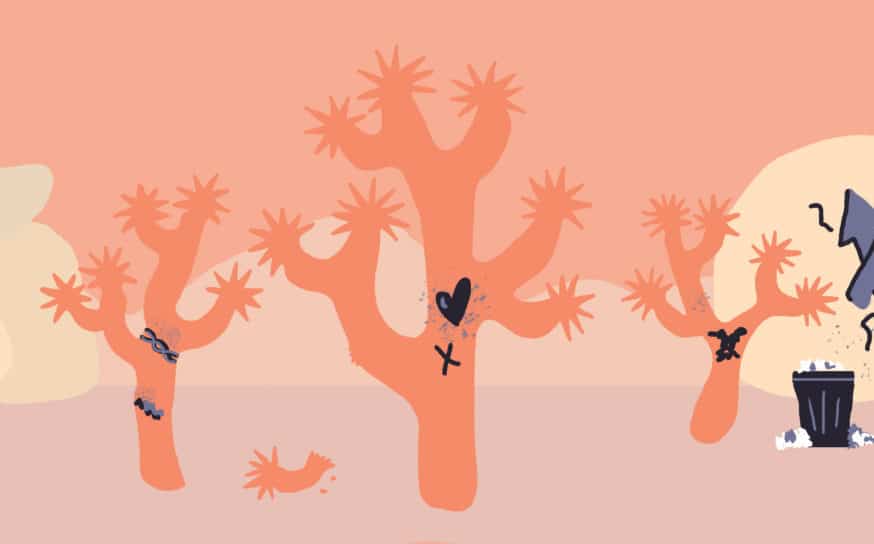Out of Office: Flight Time with Terranea Resort Falconer Joe Roy III
Taming wild birds in southern California.
-
CategoryMakers + Entrepreneurs
-
Written byCarole Dixon
Out of Office spotlights pioneers who have decided to pursue their passions beyond the typical 9-to-5 job.
If you have ever longed to be up close with Jeer and Peregrine Falcons, Harris Hawks, and Eurasian Eagle Owls, the Falconry Program at Terranea Resort in Rancho Palos Verdes offers guests the opportunity to experience these rare and captivating birds. The cliffside beach resort has gone the extra mile and enlisted an expert on-site Falconer, Joe Roy III, who provides an educational and interactive experience as guests learn about the majestic birds of prey. Terranea’s falconer also teaches guests about the general identification of the birds, highlighting the important role they play in the environment, and demonstrating how the birds are fed and launched.
The art of falconry was initially introduced at Terranea as an eco-friendly, nonlethal method of bird abatement to deter large seagull populations and promote a healthy and safe environment for guests and associates. Flying the birds around the resort displays ownership and power, which keeps the seagulls out of the area.
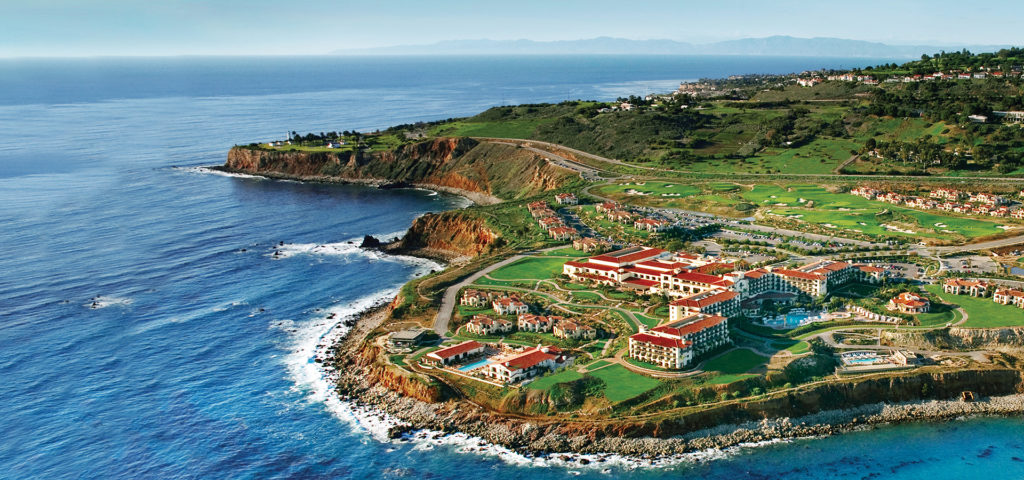
How long have you been a falconer and what drew you to this profession?
I have been a falconer for virtually my entire life: Falconry found me when I was maybe nine years old. I was in grammar school and living in Thousand Oaks, California when a middle-aged, kind of eccentric guy moved into the house next-door with a rather exotic animal collection which included a Harris’s hawk and a prairie falcon.
As for me, it all really began with a rather simple question, “I’m going to go fly my hawk, do you want to come with me?” he asked. I did, and that’s when my world began to change and when I discovered that magic is real. How could it not be when something so wild as a hawk could be turned loose, free to go or do anything it wanted and yet it chose to come back. On one such day this falcon, “Kopi”, unexpectedly rocketed off my gloved fist in pursuit of a small bird of some sort and even then, I understood that something else in my world had changed, a critical connection was made, I’d just tapped into the essence of falconry.
Early on, I had never really given much thought about falconry as a profession, it was always just my passion. That changed when I was persuaded by an acquaintance to drop out of college in the mid-80s and help him train an eagle for a theme park in Florida. Since then, I have engaged in a myriad of falconry jobs, most notably a twenty-year stint as an assembly presenter, traveling all over California.
One of my favorite gigs was working in Wyoming, where I spent thirteen summers training high-end, captive-bred arctic falcons for the Dubai export market. Gyrfalcons are the biggest, strongest, horizontally fastest, and arguably prettiest falcons on the planet. No surprise these falcons have been held in high esteem since beyond antiquity, and have been offered by heads of states to heads of states (including ours) as valued forms of diplomatic currency.
One of the great gifts of such an art as falconry is that there is always room for improvement, new things to learn on the path to perfection (in my case, at least, a path with no end, for which I am grateful).

When did you become the resident falconer at terranea?
My current employment is, to borrow a phrase, a bit of paradise. I’m the guy that gets paid to fly his hawks and falcons on the beach! Not too shabby. Six or seven years ago I was contacted by another acquaintance about filling in part time doing bird abatement work for the resort. Namely, the idea being using free-flying birds of prey to harass and intimidate seagulls in order to keep seagulls, in turn, from harassing guests. Turns out, I was uniquely qualified to not only provide effective nuisance bird deterrent, but also uber qualified to interact with guests in a variety of falconry related formats. Before long I was single handedly running the entire falconry program, and am happily still there.
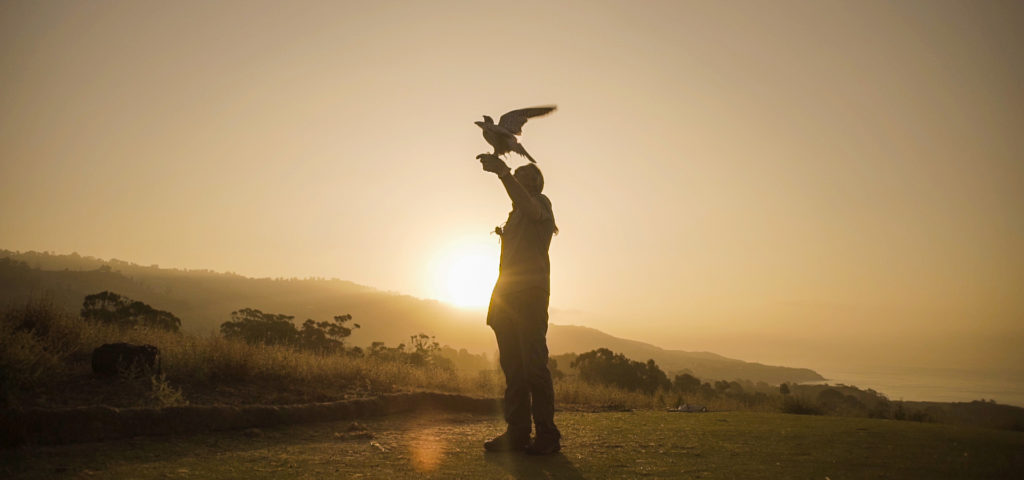
Can you tell us what a typical day is like for you?
There really isn’t anything typical about my days, though one constant theme is that I’m up at 3:30 A.M. and the work is never done. The pre-commute part of my day will include cleaning outdoor caging so that when we finally come back home birds can go straight from the truck to their outdoor facilities. A cooler will have to be filled with breakfast and lunch for all the birds to be flown. Birds of prey are, of course, carnivores. My raptors tend to eat a fair amount of ducks and rabbits in fall and winter months, but their staple diet consists of coturnix quail, which are similar to our state bird, the California Quail.
Before individually loading the five falcons and the one hawk that I am currently flying at the Terranea each one will need to be hooded and weighed. Hoods function as blindfolds and provide a calming effect during periods that may otherwise be stressful—as in riding to work in my Toyota Tacoma.
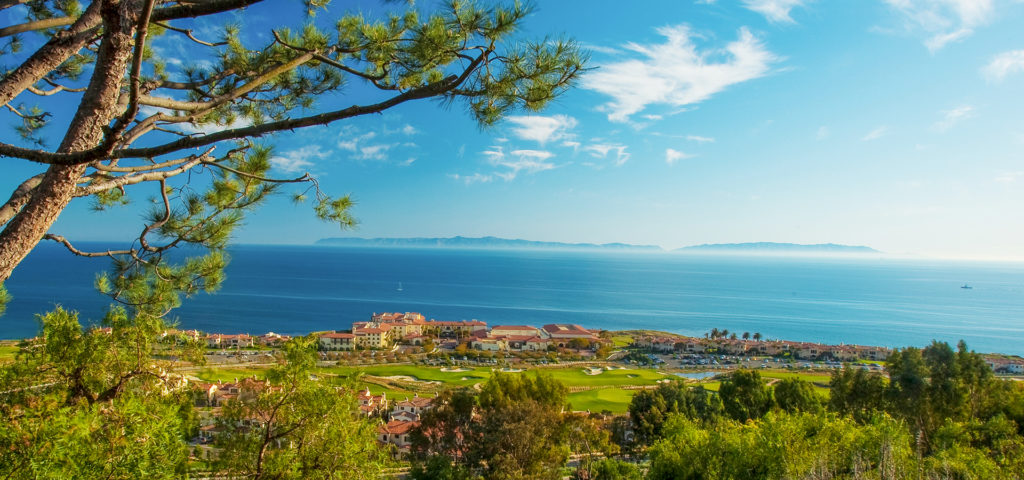
A daily weighing of my hawks and falcons on a gram scale is an essential part of keeping them in optimal condition, both mentally and physically, while providing a degree of reliability when flying them freely, and is key to maintaining at least a semblance of control.
After weighing, some of my falcons have their standard tack; jesses (leg straps), swivel, and leash swapped out for “quick releases” which allow for a quicker deployment (I can get them in the air faster). Often my Eurasian Eagle owl, “Owlbert” also comes with me in which case he’ll be loaded into a carrier before transferring to the truck. I incorporate drones in my training regimen, especially with young falcons in need of aerobic conditioning, so this will need to be loaded too.
Every bird I fly is equipped with a GPS transmitter so tracking equipment including an iPad, pocket link, and transmitter batteries will have had to be charged the night before and also loaded in the morning, along with a tracking collar and GPS receiver for my English pointer, “Elsye”, who also works with me and the birds. Guests at the resort are often surprised to see a bird dog sharing the back of my golf cart with my falcons. Turns out, the predecessors of modern pointers were actually falcon dogs, in that they were bred to hunt with falcons before guns had ever been invented.
Upon arrival, (after COVID safety protocols) I grab the keys to my golf cart and get rolling. By arriving before first light, I am able check for possible food sources for hungry seagulls, crows, ravens, pigeons and grackles. By removing these before first light I am able to circumvent a lot of potential trouble: If a problematic bird eats in the resort they can be expected to come back in the future. Birds have excellent memories and scientists are comparing corvids, i.e., ravens, crows and jays, to chimpanzees—super smart with long memories.
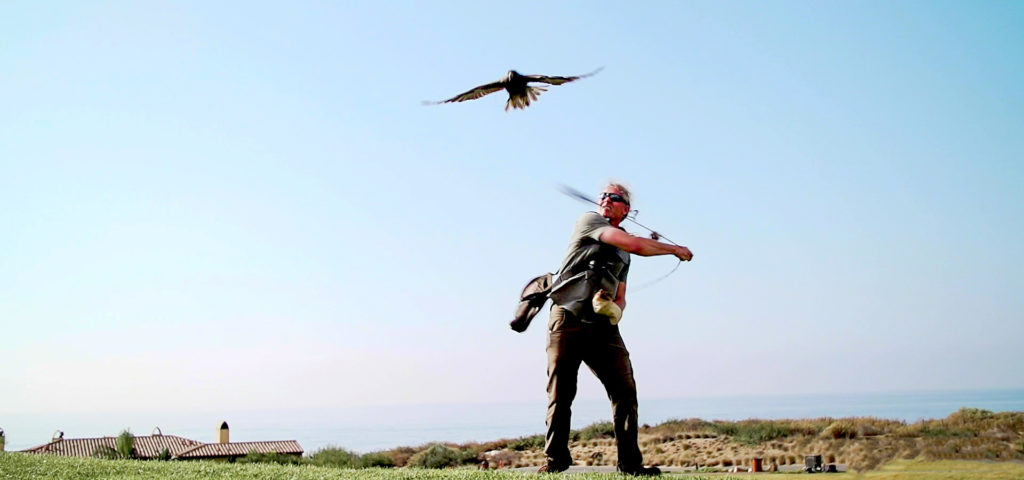
By now, even though the sun hasn’t yet cleared the horizon, it should be light enough to get my first falcon in the sky. All of my falcons are hybrids, and my favorite crosses are gyrfalcons (gyr) crossed with peregrines. Peregrine falcons are thought by many to be the world’s fastest animals, and having been clocked at 240+ mph in a stoop they may well be. “Apex” is a one-year old gyr x peregrine hybrid and usually the first bird I put in the sky. I have a brief window of time on the golf course before the golfers arrive and this is where I launch the drone and send it several hundred feet up. Upon being unhooded, Apex will climb to the drone’s altitude, snatch a baited lure which detaches from the drone after-which a parachute will deploy as the falcon drifts to the ground.
Next bird up is usually “Thor”, a stark white hybrid and arguably the prettiest falcon on my team. This is actually one of my favorite parts of my day: Thor will be out for an hour or two, totally autonomous, free to go where he wants and do what he wants. If there is a decent wind blowing, Thor loves to ride the currents of wind which are deflected by the sea-cliffs surrounding the western edge of the resort. I probably have nearly as much fun watching him fly as he does flying, which is one of the great joys of falconry in that there is a vicarious aspect at play here, almost as if my birds take a part of me with them while they revel in the sky.

I will probably fly Sammy next – a seven-year-old dark falcon with mostly gyr genetics with a little saker falcon genetics (1/8) mixed in. Sakers are the falcons Arabs have been flying for thousands of years. I usually lure stoop him which is not entirely unlike playing a game of keep-away, in that I swing a lure (small leather bag on a line) and he chases it. I try to keep the lure just out of reach as Sammy makes high-speed passes trying to catch it. This is another way of exercising falcons, and is a useful means of doing demonstration flights for guests.
My favorite falcon is a five-year-old gyr x peregrine hybrid named Shaman who loves to fly. If I am not entertaining guests, I may keep Shaman on the wing for half-an-hour up to two hours at time. One of the fun things about flying falcons with GPS transmitters is that I am able to collect data; how long, how high, how fast, and how far. Some of Shaman’s longer flights have covered well in excess of twenty air miles within the confines of the complex with speeds in excess of 120 mph. This falcon cooks and instills terror in would be trespassers.
Almost always the last bird to fly is “Tomahawk”, my tiercel (male) Harris hawk. I have trained Tomahawk to follow me around the entire complex so where-ever I go he goes, leap-frogging along from tree to tree, building to building. Tomahawk is a frequent visitor of guests on balconies as we cruise the resort.

What is the best part of your day or anything that we might find surprising about the birds?
There is so much to love about my work not the least of which is the setting. I have always loved the ocean, and Terranea is situated on a particularly pretty stretch of Southern California coastline. There are few places I would prefer to watch the sunrise than on the beach (and, by the way, the sunsets here are gorgeous too). I love that I work outdoors, especially in such a dynamic, wildlife rich environment. I see dolphins nearly every day, and during the migrations the whale watching is also amazing. I am an avid bird-watcher and this particular stretch of beach is a mecca of sorts with a dizzying array of bird species, some of which gather by the thousands in the Pacific. Even within the confines of the resort there are a wide variety of birds including wild hawks, falcons and owls.
Sharing wildlife or falconry related encounters with our guests can be especially fun and rewarding, and sometimes provides an opportunity to promote a bit of environmental awareness. Maybe the thing that is most surprising about the birds I work with is how similar they are to us. Raptors have stoic expressions and can be somewhat hard to “read” if you don’t know what to look for. But the emotions are there, these are sentient beings, each with its own unique and distinct personality.
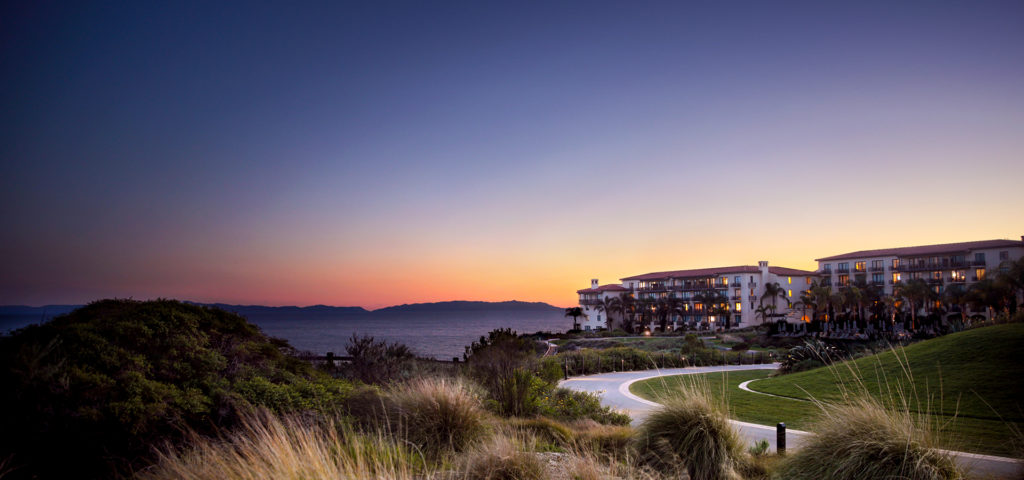
What advice can you give someone who wants to attempt falconry, even for a pastime?
While the art of falconry is commendable, I don’t necessarily view it as recommendable. Falconry tends to be all consuming, in part due to the constant demands of caring for and flying even just one bird. While I have never conducted a survey, I know a lot of falconers that lost marriages, spouses tend to grow tired of competing with “that damn bird!” Moreover, if a falconer is not highly motivated, caretaking becomes troublesome and birds might not receive the kind of attention or care they deserve and require. That said, falconry has enriched my life (and that of others, no doubt) in ways that would almost be difficult to describe: I can scarcely imagine what I would do, or what I would be for that matter, without falconry in my life.
Occupationally speaking, I would actively discourage those that might want to indulge in falconry for a paycheck. If you are not in this for the love of the birds and the craft, in my humble opinion, you are not in it for the right reasons. But if you would like to dabble in it, come on down, we’ll go fly birds together.
In the Summer of COVID, Drive-In Theaters Make an Unexpected but Welcome Comeback
Cars, masks, movies and music.
Dewey Weber: Little Man On Fire
A look back at the life, loss and legacy one of California’s original surfing icons.
Get the Latest Stories





